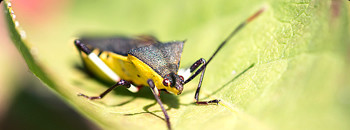The Christmas tree is a classic holiday staple and decor focal point for many. You might have a tradition of heading to the tree farm and choosing the same type of tree every year after Thanksgiving or grabbing whatever is left at the lawn & garden store the weekend before Christmas. But, whatever your style, we can help you choose and care for your Christmas tree this holiday season.
Choose a Style Fit for You
Color, scent and branches are just a few of the things to consider when choosing the best Christmas tree for your home. While the types of trees available at your local lawn & garden center or tree farm will vary depending on where you live, we’ve rounded up a list of popular trees to consider bringing home.
- Fraser Fir – One of the best-selling Christmas trees in the U.S., the soft, dark blue-green needles are sure to please. Fraser Fir trees are among the longest lasting and will keep up to 6 weeks. Upward-facing branches make hanging your favorite ornaments a breeze.
- Balsam Fir – Looking for a tree that will fill up your room with the sweet smell of the holidays? Balsam Firs are known for their strong, long-lasting “Christmas-y” fragrance, making the tree a popular holiday choice. The dark green branches are soft and flexible, great for keeping a hold on lighter ornaments.
- Douglas Fir – The traditional, sweet citrus scent of the Douglas Fir has made the tree a popular choice in the U.S. for almost a century. The tree is known for its dark green or blue needles that typically have longer retention rates.
- Blue Spruce – The beautiful silver-blue color and symmetrical shape of the Blue Spruce is every design enthusiast’s dream. While the tree holds needles well, watch out for their sharpness when hanging ornaments.
- Leyland Cypress – If the thought of a fresh tree is already sneeze-inducing, consider a Leyland Cypress. The trees don’t produce pollen, making them a compatible match for family members with allergies.
Pro tip: Once you’ve identified the type of tree you’d like to bring home, look for a tree without any browning spots. If you pull on the tree’s branches and notice needles falling, move onto the next one. Falling needles mean the tree is likely starting to dry out and won’t last as long.
Keep Your Tree Fresh All Month Long
With proper care, you can extend your tree’s lifespan for you and your family to enjoy this season.
- Trim the Trunk. Before you bring your tree inside, make a fresh cut at the bottom of the trunk. Cutting off ½-1 inch off the base will ensure optimal water absorption. Lawn & garden stores and tree farms often do this for you.
- Size your Tree Stand. Use a tree stand that holds about one quart of water per inch of the stem diameter. For most trees, a stand that holds one gallon of water or more should do the trick!
- Water. During the first week, check water levels twice a day to make sure there is enough. Avoid setting up your tree in areas of your home close to blowing heat or air, which will cause it to dry out faster.

